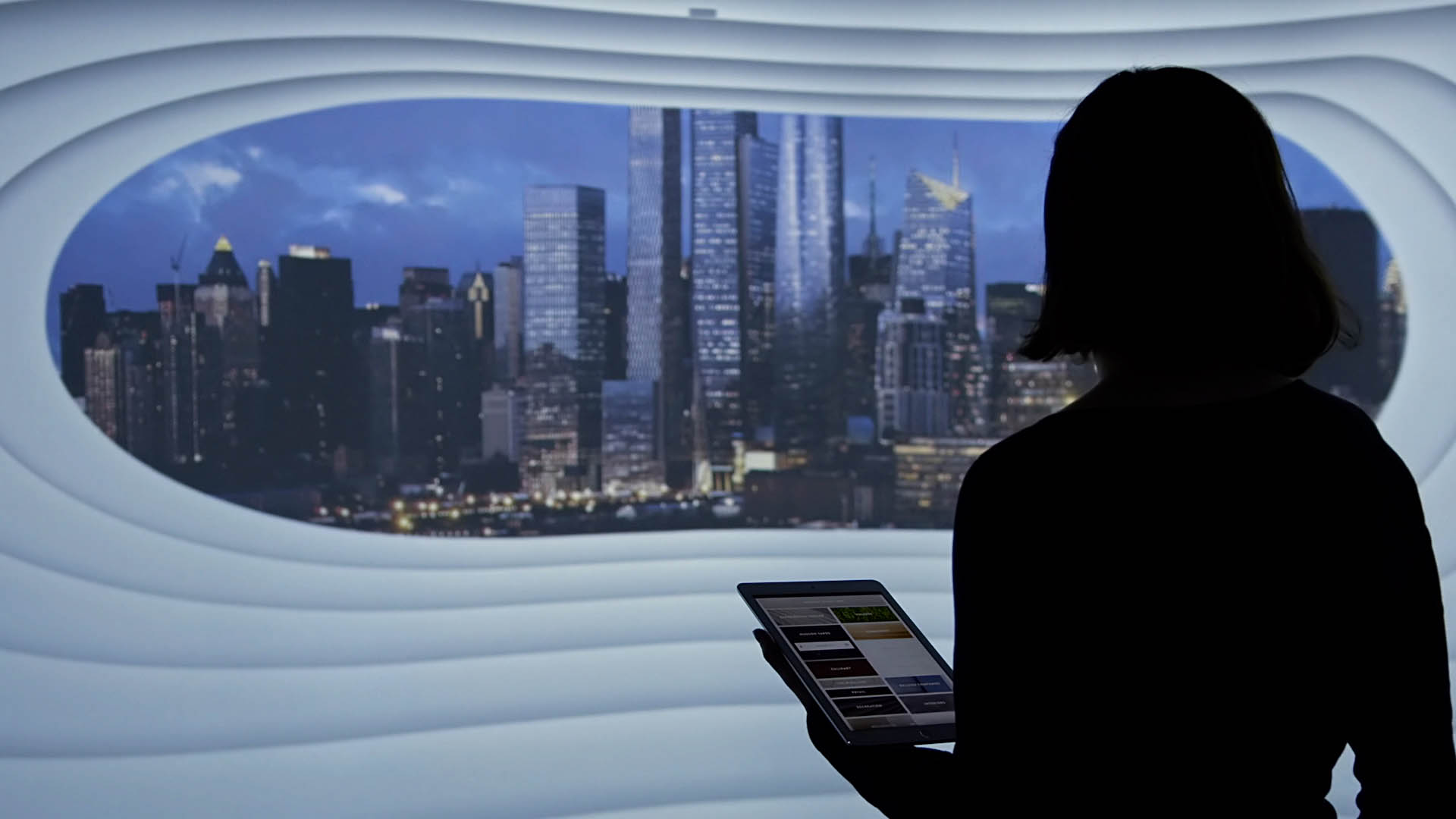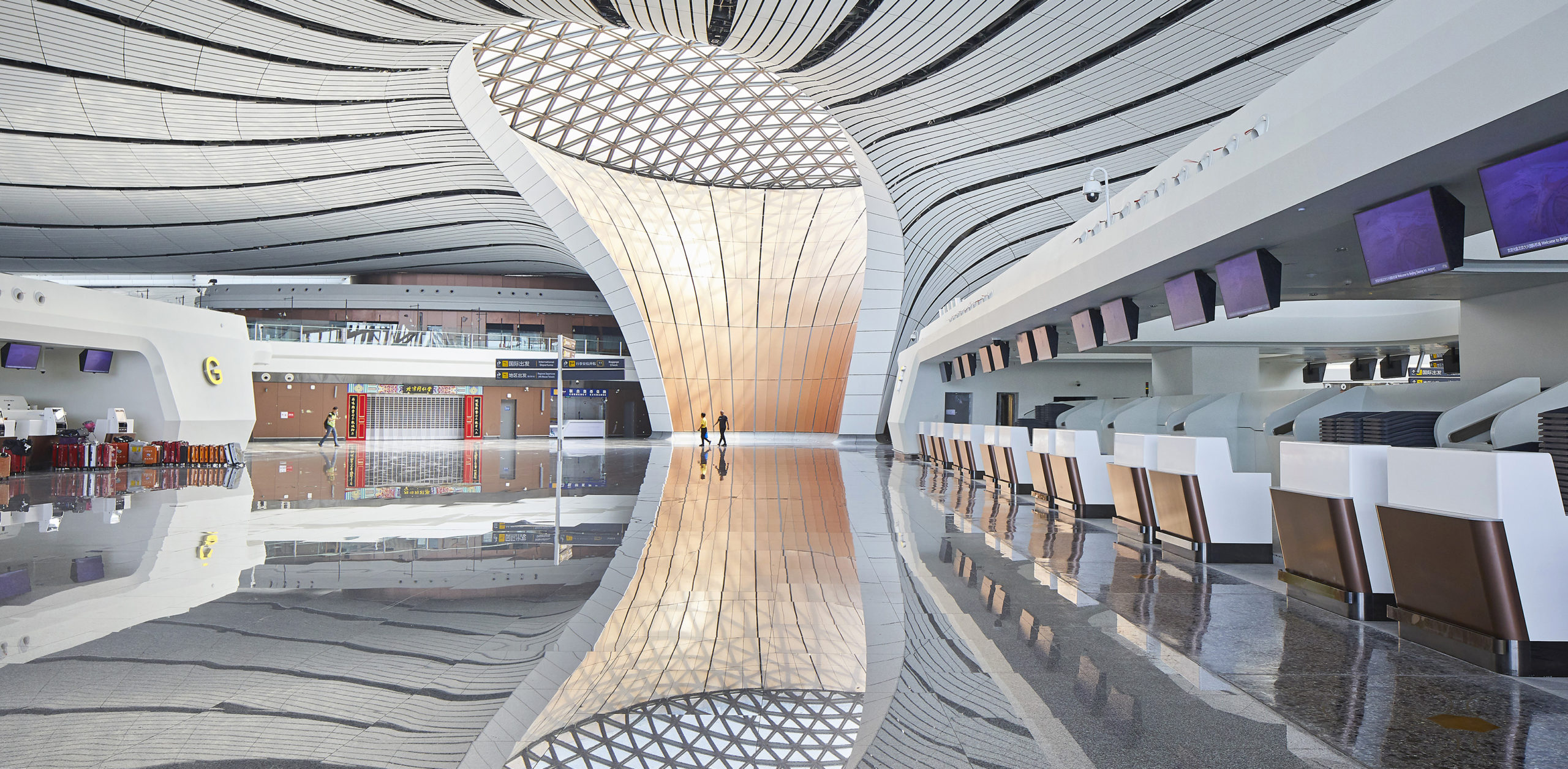The latest edition of “Architizer: The World’s Best Architecture” — a stunning, hardbound book celebrating the most inspiring contemporary architecture from around the globe — is now available. Order your copy today.
When thinking about the future of design and architecture, it is important for human thinking to consider other beings that are vital components of our ecosystems. The climate crisis and human encroachment have already laid waste to biodiversity around the world. As awareness of the interconnected nature of our ecosystems gorws, we are seeing an increase in animal conservation efforts and design interventions at different scales.
A smaller part of this affected community is insects and other winged creatures. Urban beekeeping and insect farming are emerging trends in recent years. Architects around the world are devising methods to preserve bird habitats and create products that minimize the harm done to them due to pollution and tall buildings. The following projects are just a few examples where designers have stepped in with proposals to foster human interaction with insects, birds and bats, creating safe environments for them to flourish.
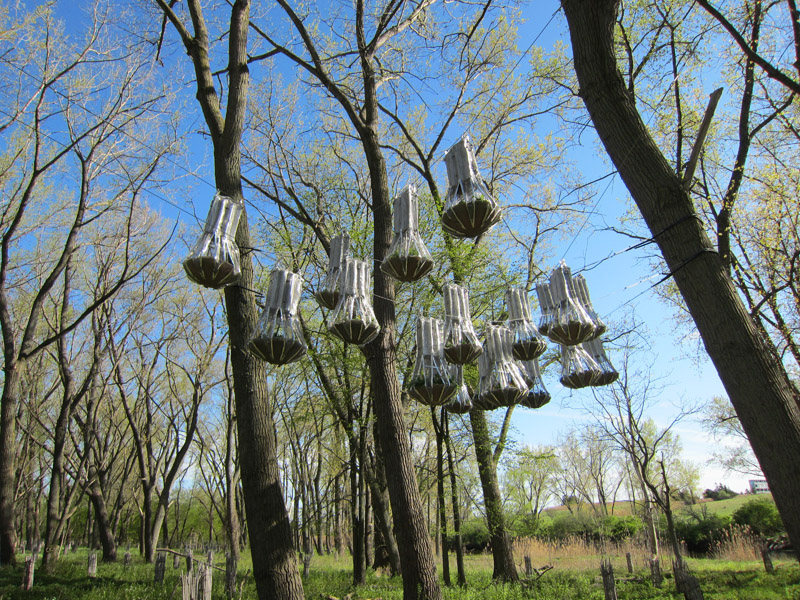
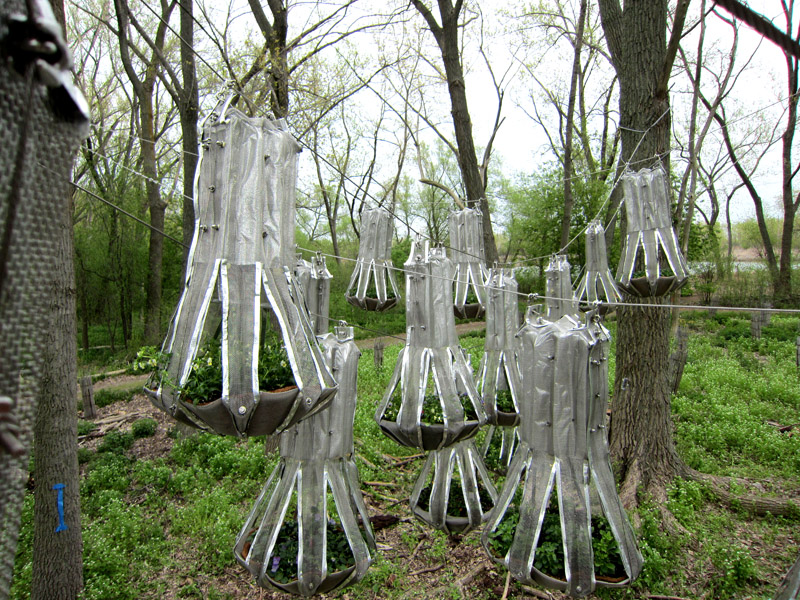
Bat Cloud by Ants of the Prairie, Buffalo, New York
At first glance, these pods might look like hanging bats. In reality, however, the modules are designed for bat habitation. The set of beaker-like hangers is part of the University at Buffalo Humanities Institute’s “Fluid Culture” Event Series. The tubular portion on the top is created for nesting and the wider base is covered in soil and native plants. It is designed in a way that the excrement of bats gets collected in the bowl below, fertilizing the plants. The lower portion also includes a slow water drainage system.
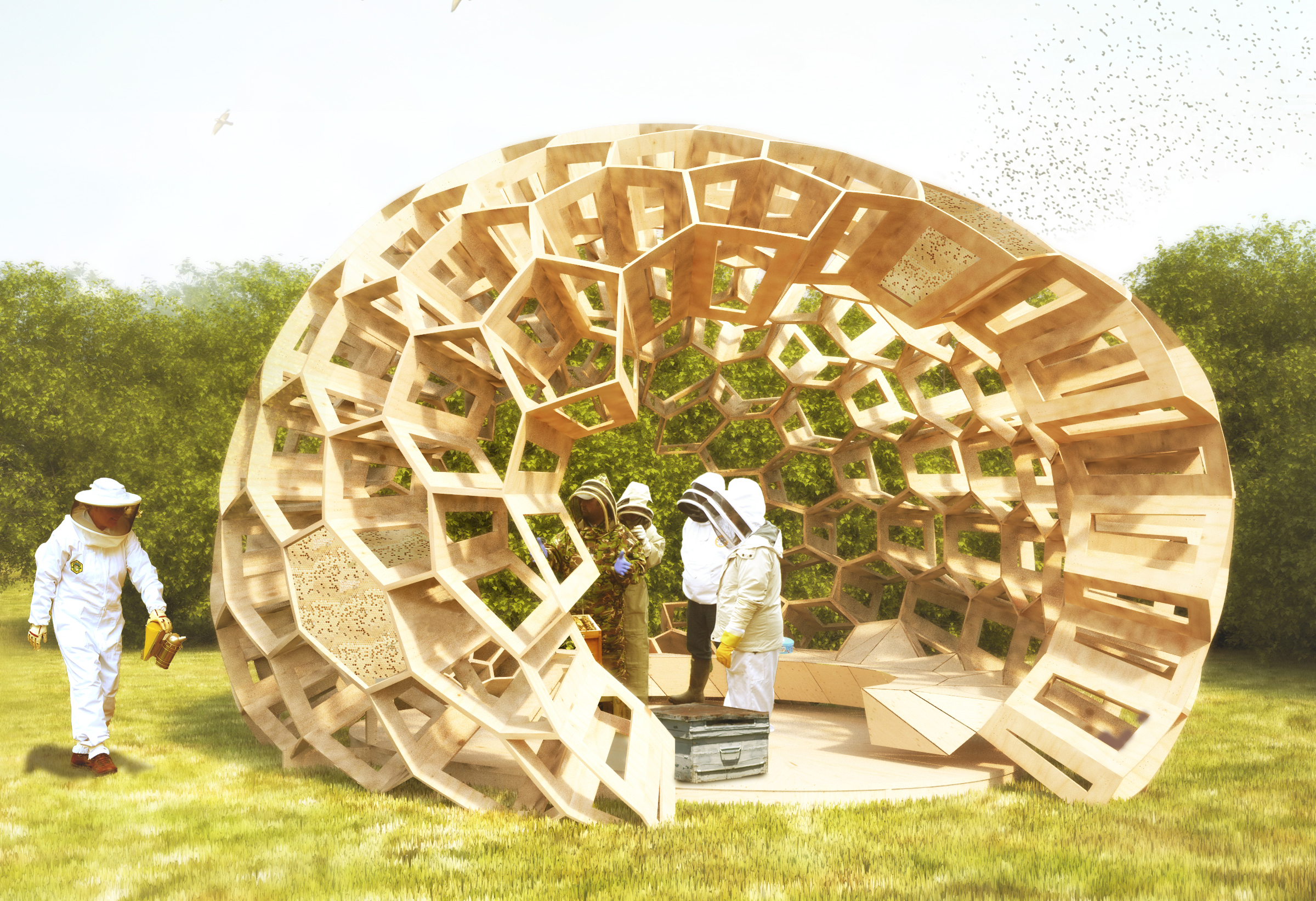
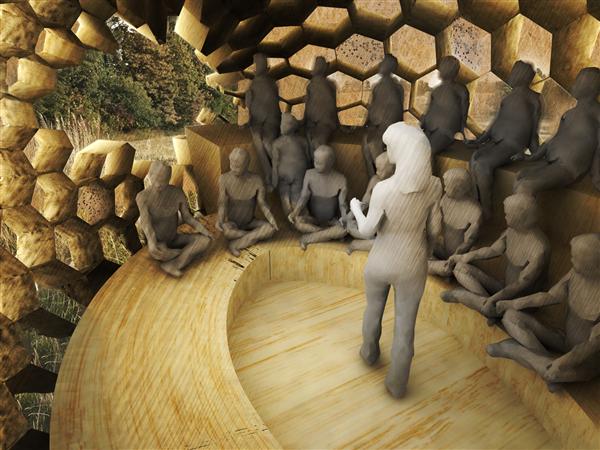 le b-Shack by Maria Mingallon, FARMM, Montreal, Canada
le b-Shack by Maria Mingallon, FARMM, Montreal, Canada
The firm conceptualized this structure to help with the increase of colony collapse disorder — where a majority of bees unexpectedly disappear from a colony — across the world. Honeybees are an integral part of the ecosystem and so, the b-shack was created to support the observation and study of bees for urban beekeeping communities. The hive-like structure also acts as a small lecture hall where students can sit on the bench that has been incorporated into its form.
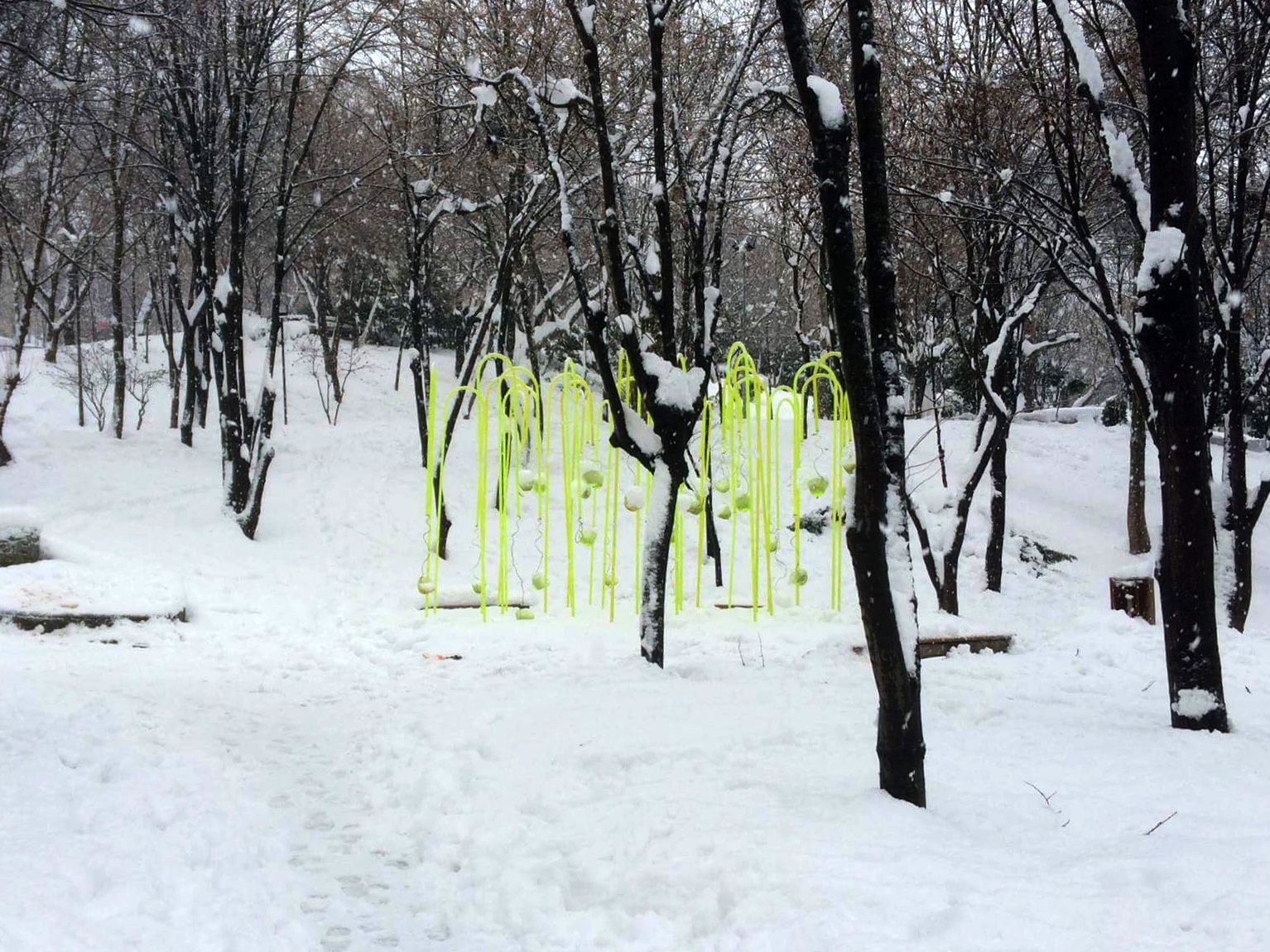
 Birdscape/KUŞLUK by OKTAA, Istanbul, Turkey
Birdscape/KUŞLUK by OKTAA, Istanbul, Turkey
In Turkish, the phrase “kuşluk vakti” refers to the bird-like potions of food that people might consume before larger meals. Taking inspiration from that phrase, OKTAA devised an open birdfeeder where humans can also spend time feeding the birds and interact with them. The installation acts as an artificial forest made of large attention-grabbing neon stems with hanging pots that contain food for the birds. The base is intentionally left black to show the bird droppings that might occur.

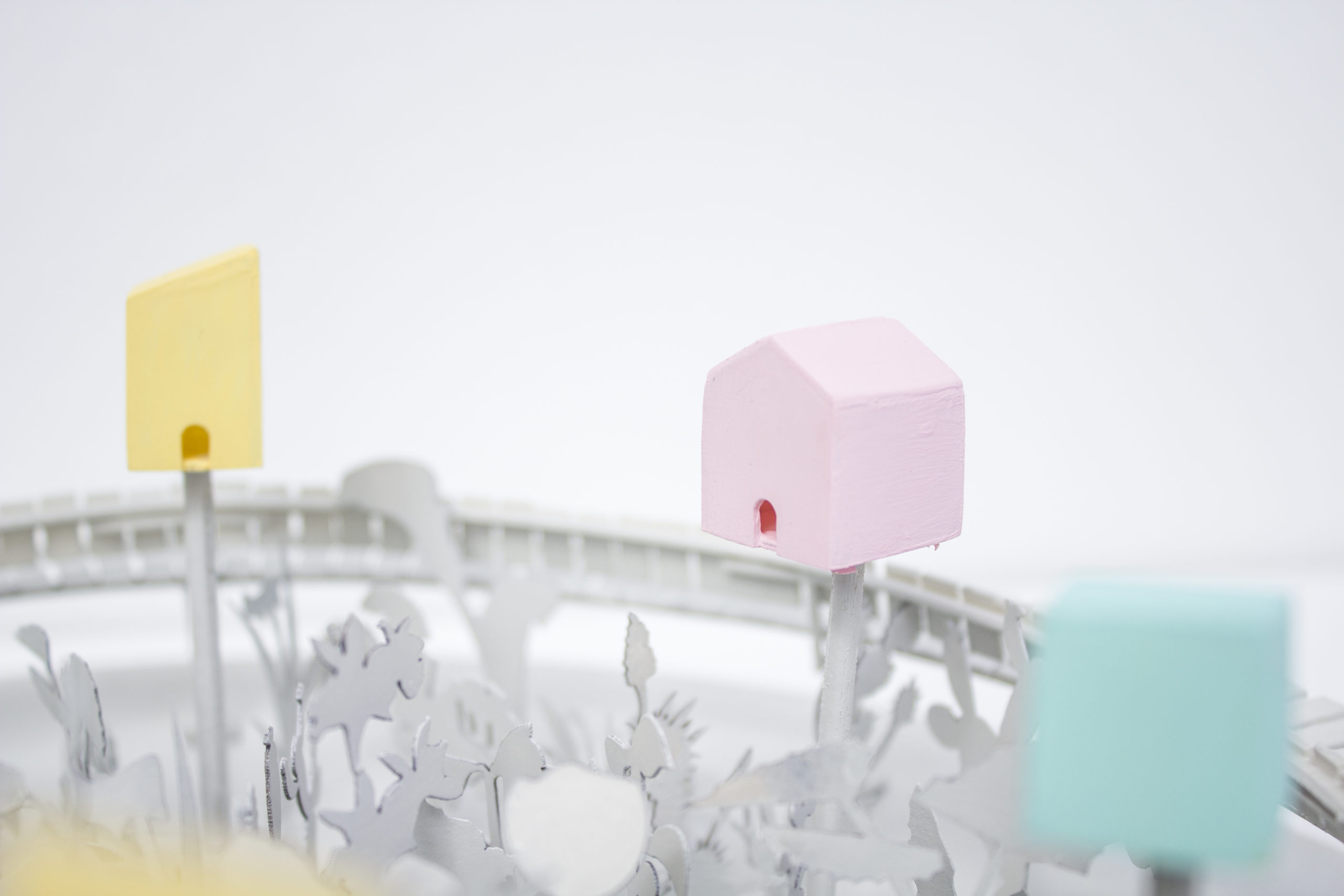 Honey Garden by Barbara Becker Atelier Arquitetura, Curitiba, Brazil
Honey Garden by Barbara Becker Atelier Arquitetura, Curitiba, Brazil
The cultivation of bee habitats is becoming increasingly popular, and Honey Garden takes this collective impulse a step further by trying to increase interactions between humans and bees. The seating is accompanied by boxes that house four types of native bees that don’t sting as well as information boards for each. The colorful boxes and plants also add an element of fun and cheer to the design.
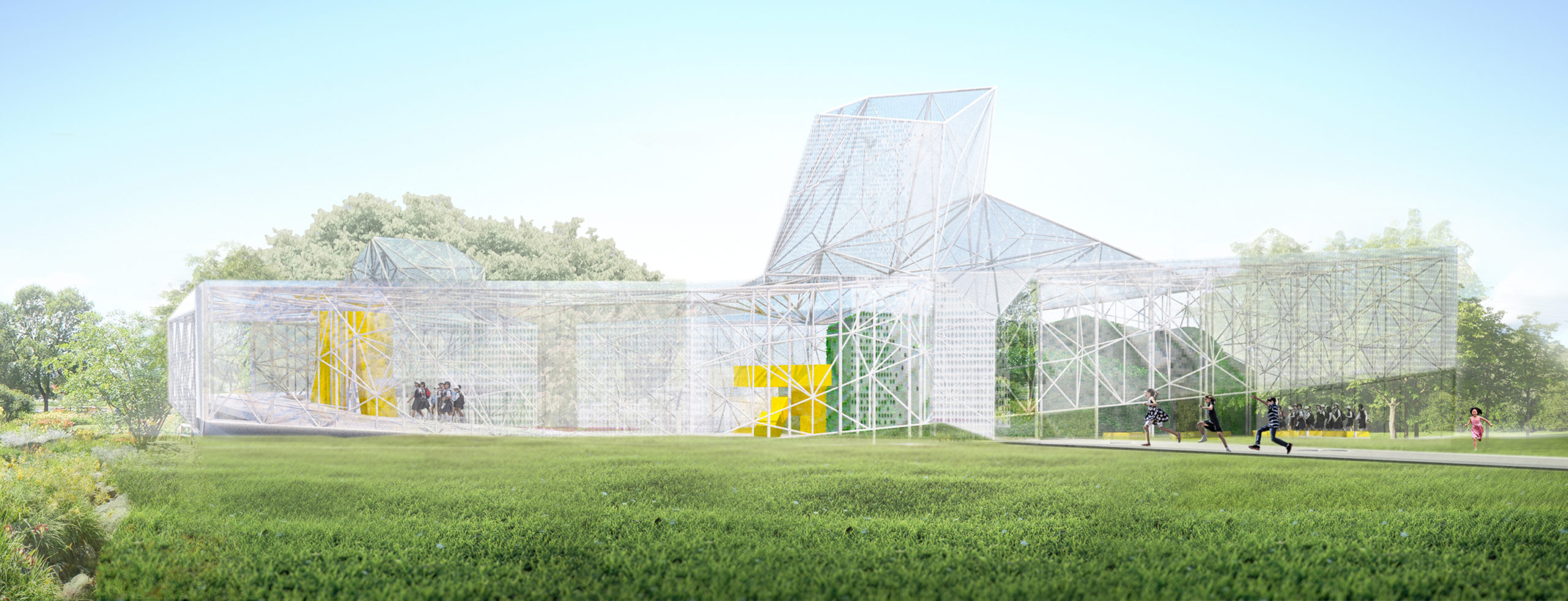
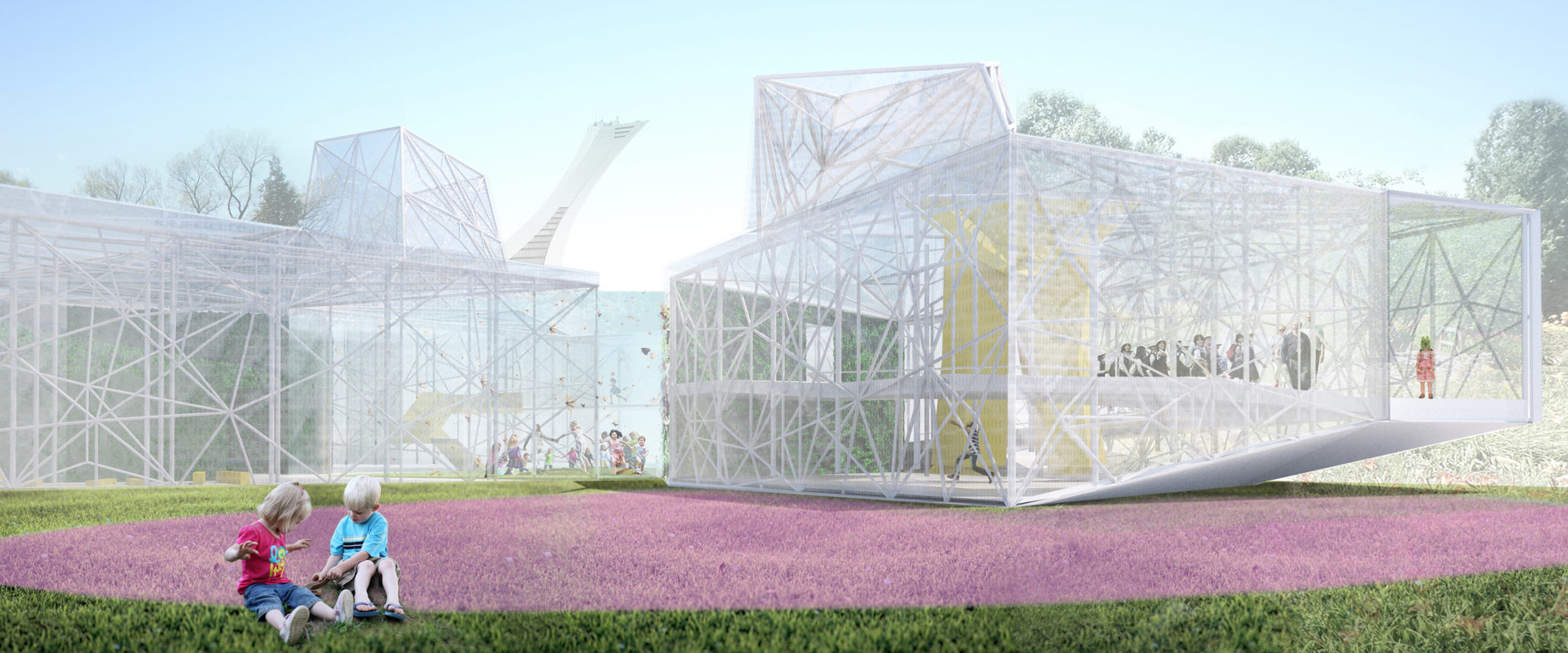 L’Insectarium de Montréal by TBA, Montreal, Canada
L’Insectarium de Montréal by TBA, Montreal, Canada
The existing building at the Montréal Botanical Garden is doubled in size to accommodate spaces where humans and insects can interact. At the center of the proposal is a light-enclosed volume that blends with the existing structure and natural environment around. The building’s skin controls the temperature and light within based on the requirements of this immersive insect aviary.

 K-abeilles Hotel for Bees by atelierd.org, Muttersholtz, France
K-abeilles Hotel for Bees by atelierd.org, Muttersholtz, France
The hotel serves a two-fold purpose: it creates micro-housing for bees and a shaded spot for people to relax. The overall form replicates a honeycomb pattern where some voids are left open for people to see through. The seating inside is also arranged in different heights for people to sit or lean on.
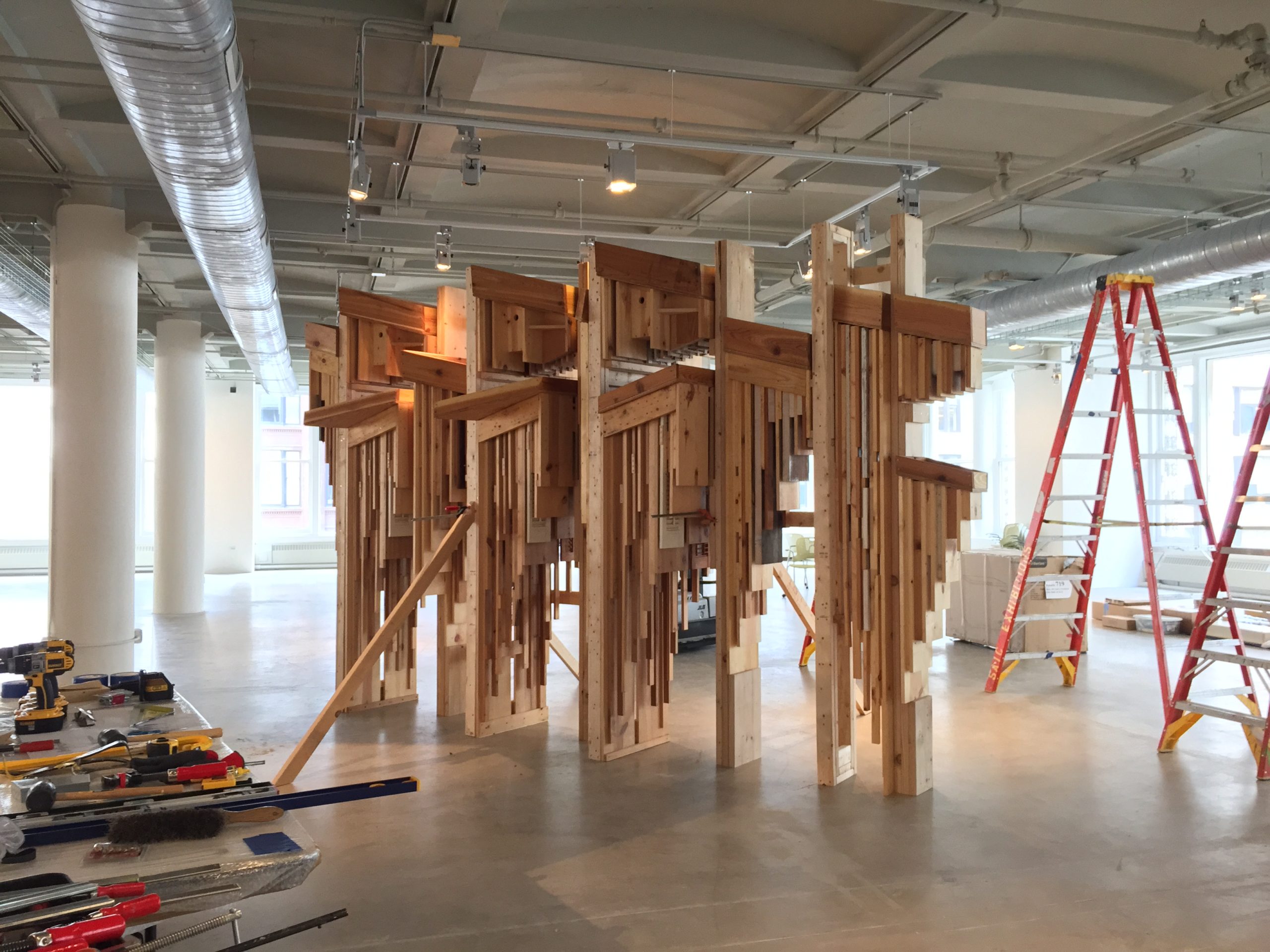
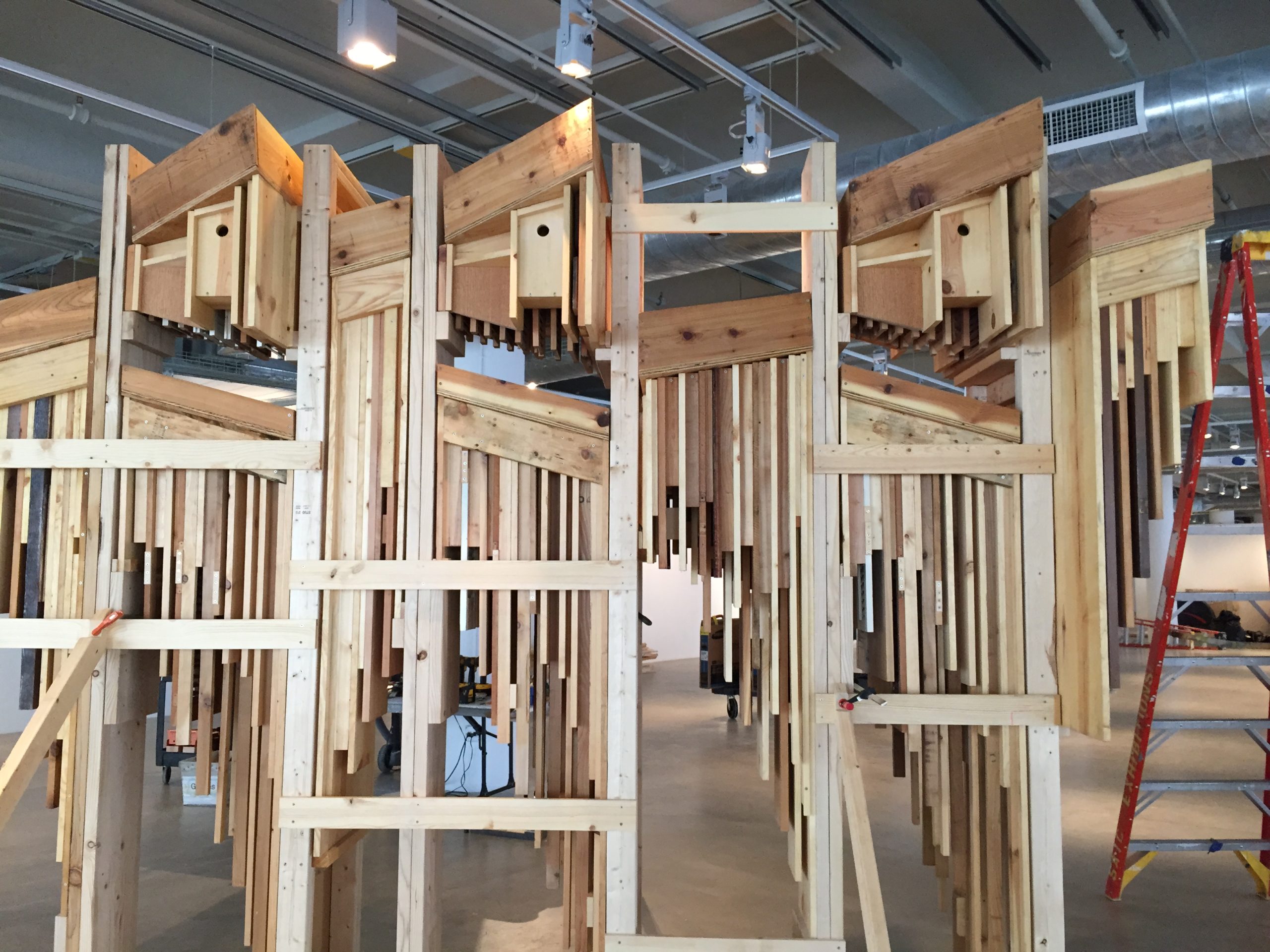 Habitat Wall by Ants of the Prairie, Chicago, Illinois
Habitat Wall by Ants of the Prairie, Chicago, Illinois
Cedar, pine and other recycled building madding materials come together in the form of a cave-like structure with thin crevices to house bats and other birds. The unfinished wood and textured surfaces in the prototype make it easier for bats to climb within and the layering of wooden pieces creates good insulation. The structure also contains nesting boxes for other birds.

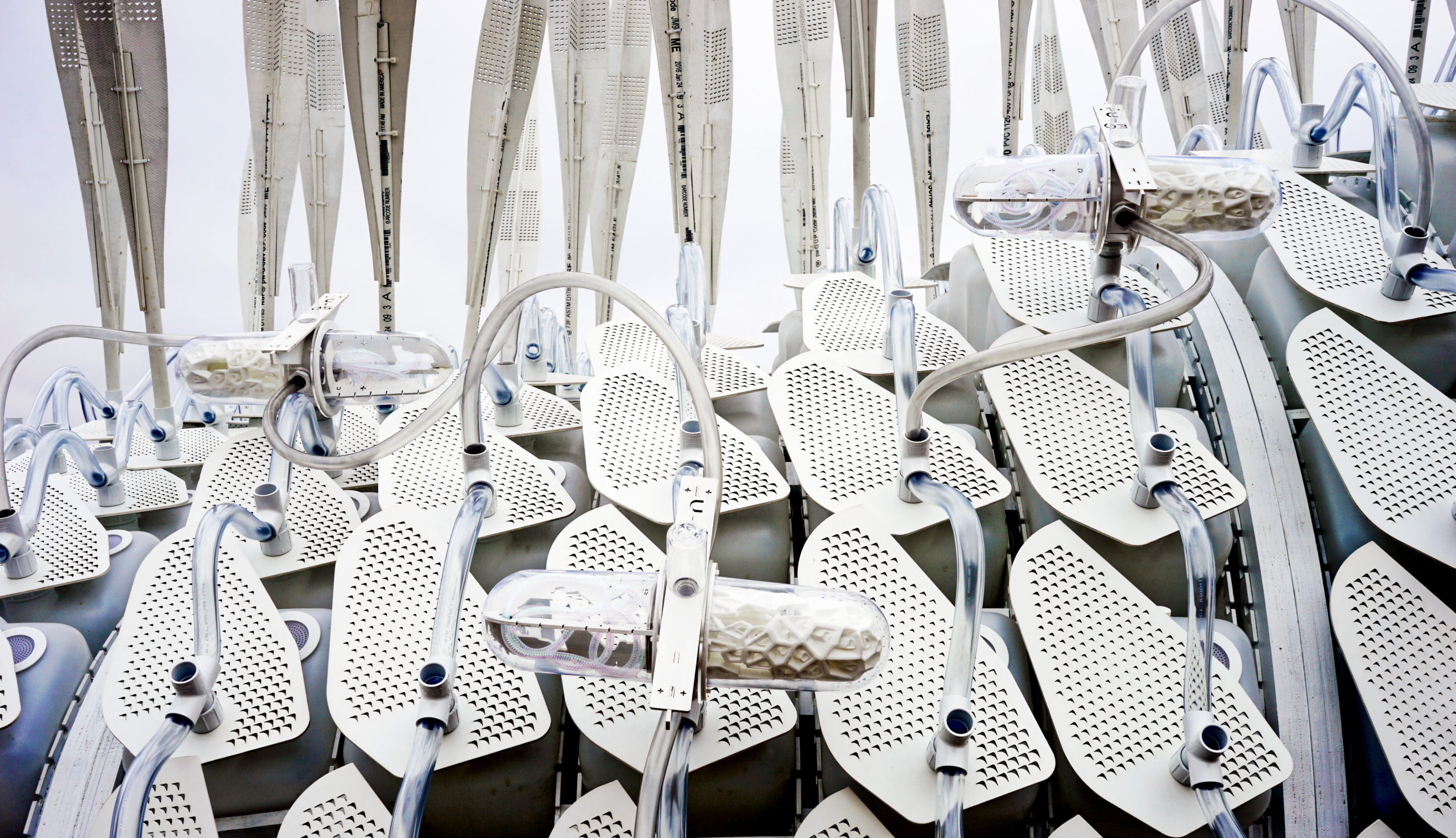 Cricket Shelter Modular Edible Insect Farm by Terreform ONE, Brooklyn, New York
Cricket Shelter Modular Edible Insect Farm by Terreform ONE, Brooklyn, New York
Unlike other projects in this list that look at conservation, the insect farm targets a situation that we could encounter in the future. Given the climate crisis, border conflicts and economic instability, the firm imagines that there might be a food and shelter crisis at some point. Their solution to this problem is creating a shelter and an insect farm where humans can access insect protein in times when raising livestock will not be possible. The design aims to maximize nutrient resources by incorporating a mechanism for sourcing cricket flour that can be used in a variety of recipes. For this, the prefabricated containers contain ventilation screens, flexible insect sacks, locally controlled louvers and permeable feeder ports with rotating locking mechanisms.
The latest edition of “Architizer: The World’s Best Architecture” — a stunning, hardbound book celebrating the most inspiring contemporary architecture from around the globe — is now available. Order your copy today.






 Bat Cloud
Bat Cloud  Birdscape/KUŞLUK
Birdscape/KUŞLUK  Cricket Shelter Modular Edible Insect Farm
Cricket Shelter Modular Edible Insect Farm  Habitat Wall
Habitat Wall  Honey Garden
Honey Garden  K-abeilles Hotel for Bees
K-abeilles Hotel for Bees  L'Insectarium de Montréal
L'Insectarium de Montréal  le b-Shack
le b-Shack 